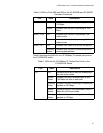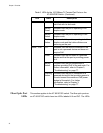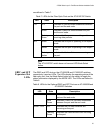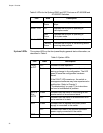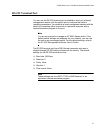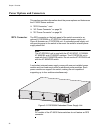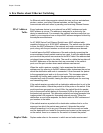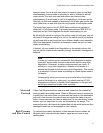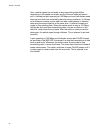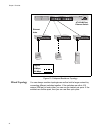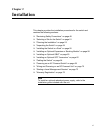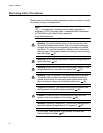
AT-8500 Series Layer 2+ Fast Ethernet Switches Installation Guide
41
transmits data. If an end node can receive or transmit data, but not both
simultaneously, the end node is operating in what is referred to as half-
duplex mode. If an end node can both receive and transmit data
simultaneously, the end node is said to be operating in full-duplex mode.
Naturally, an end node capable of operating in full-duplex can handle data
much faster than an end node that can only operate in half-duplex mode.
The twisted pair ports on the AT-8500 Series switches can operate in
either half- or full-duplex mode. The twisted pair ports are IEEE 802.3u-
compliant and will Auto-Negotiate the duplex mode setting for you.
By allowing the switch to configure the duplex mode for each port, you will
not need to change the setting for a port on the switch should you replace
an end node with an end node that has a different duplex mode capability.
With Auto-Negotiation, the switch automatically resets the port to a new
duplex mode setting.
If desired, you can disable Auto-Negotiation on the switch ports so that
you can set the duplex mode manually through the switch’s management
software.
Note
In order for a switch port to successfully Auto-Negotiate its duplex
mode with an end node, the end node should also be using Auto-
Negotiation. Otherwise, a duplex mode mismatch can occur. A
switch port, using Auto-Negotiation, defaults to half-duplex if it
detects that the end node is not using Auto-Negotiation. This results
in a mismatch if the end node is operating at a fixed duplex mode of
full-duplex.
Consequently, when you connect an end node with a fixed duplex
mode of full-duplex to a switch port, you should use the AT-S62
management software to disable Auto-Negotiation on the port and
set the port speed and duplex mode manually.
Store and
Forward
These Fast Ethernet switches use store and forward as the method for
receiving and transmitting frames. When an Ethernet frame is received on
a switch port, the switch does not retransmit the frame out the destination
port until it has received the entire frame and stored the frame in a port
buffer. It then examines the frame to determine if it is a valid frame. Invalid
frames, such as fragments or runts, are discarded by the switch. This
ensures that only valid frames are transmitted out the switch ports and that
damaged frames are not propagated on your network.
Back Pressure
and Flow Control
To maintain the orderly movement of data between the end nodes, an
Ethernet switch may periodically need to signal an end node to stop
sending data.



